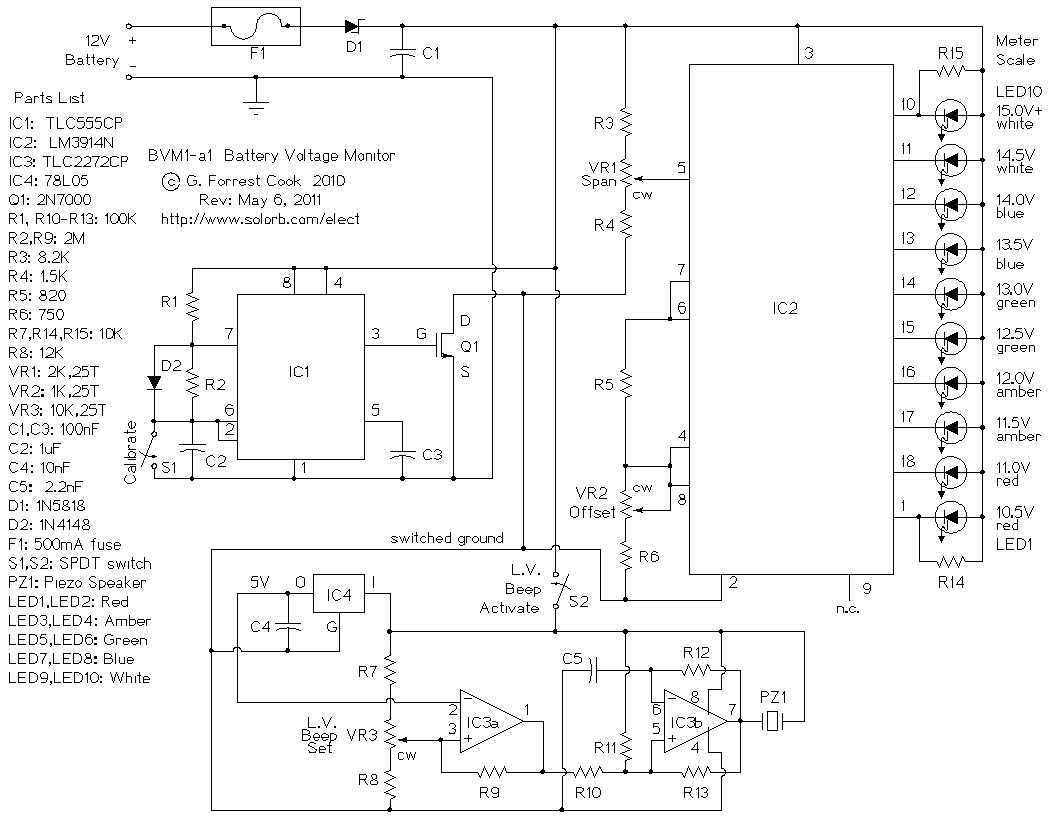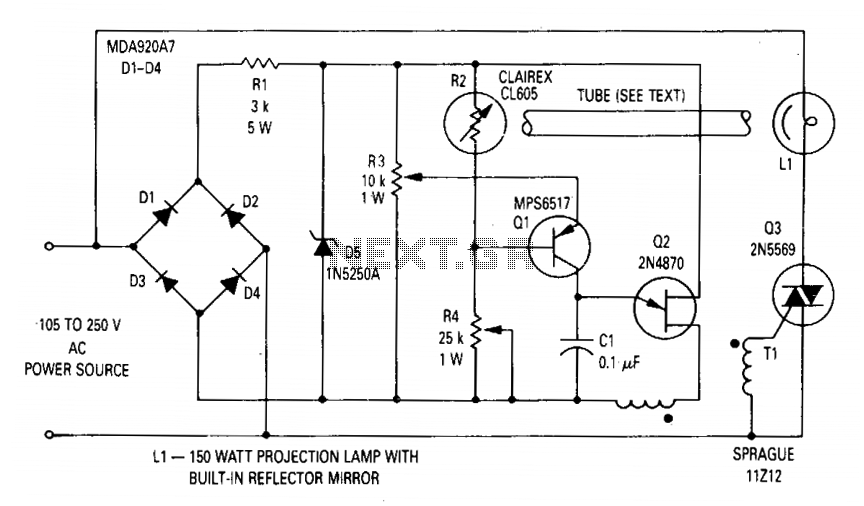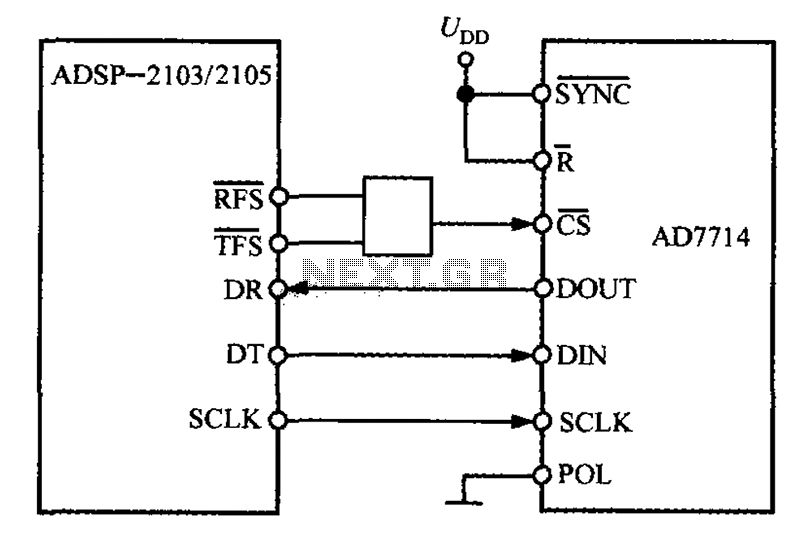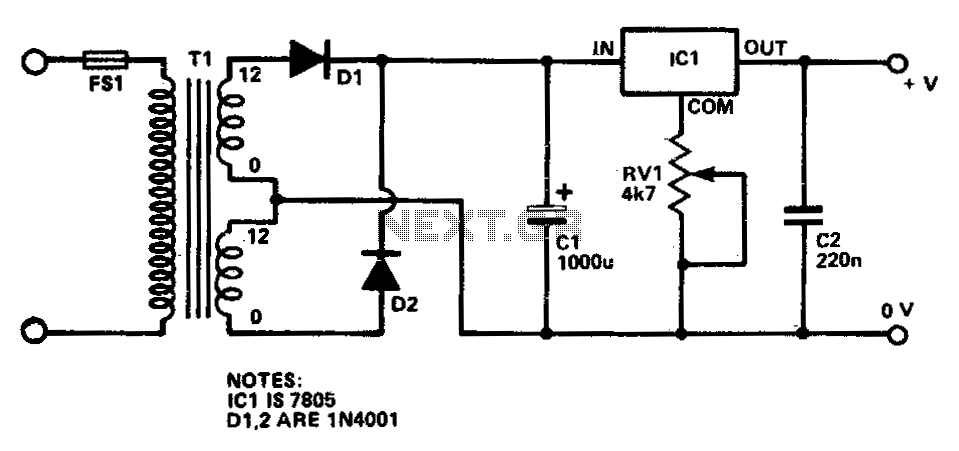
Battery Low Voltage Beeper

This circuit provides an audible and visual low voltage warning for 12V battery powered devices. When the battery voltage is above the set point (typically 11V), the circuit is idle. If the battery voltage should fall below the set point, the LED will light and the speaker will emit a periodic beeping sound to warn of the impending loss of power. The circuit was designed for monitoring solar systems, but it could also be useful for automotive and other 12V applications. More: U2 provides a 5V regulated voltage reference. U1 is wired as a comparator, it compares the fixed 5V regulated voltage to the voltage on the wiper of VR1, that is proportional to the 12V supply. When the supply drops below the set point, the output of U1 g
The circuit operates as a low voltage warning system specifically tailored for devices powered by a 12V battery. It utilizes a voltage comparator configuration wherein U1, likely an operational amplifier, is set to compare the voltage level from the battery against a predetermined reference voltage provided by U2. U2 generates a stable 5V output, which serves as the reference point for the comparator.
The adjustable resistor VR1 is employed to set the threshold voltage, which corresponds to the desired low voltage cutoff, typically around 11V. As the battery voltage decreases and dips below this threshold, the output of U1 transitions, triggering the visual and audible alarms.
The visual warning is indicated by an LED that illuminates when the voltage drops below the set point. Simultaneously, a speaker or piezo buzzer is activated to produce a periodic beeping sound, alerting users to the critical voltage level. This dual alert system ensures that users are promptly notified of the battery's status, allowing for timely intervention to prevent complete power loss.
The circuit is particularly well-suited for applications in solar power systems, where monitoring battery health is essential for maintaining operational efficiency. However, its design also lends itself to automotive applications and other scenarios where 12V battery systems are prevalent. This versatility makes the circuit a valuable addition to any low voltage monitoring toolkit.This circuit provides an audible and visual low voltage warning for 12V battery powered devices. When the battery voltage is above the set point (typically 11V), the circuit is idle. If the battery voltage should fall below the set point, the LED will light and the speaker will emit a periodic beeping sound to warn of the impending loss of power. The circuit was designed for monitoring solar systems, but it could also be useful for automotive and other 12V applications.
U2 provides a 5V regulated voltage reference. U1 is wired as a comparator, it compares the fixed 5V regulated voltage to the voltage on the wiper of VR1, that is proportional to the 12V supply. When the supply drops below the set point, the output of U1 g 🔗 External reference
The circuit operates as a low voltage warning system specifically tailored for devices powered by a 12V battery. It utilizes a voltage comparator configuration wherein U1, likely an operational amplifier, is set to compare the voltage level from the battery against a predetermined reference voltage provided by U2. U2 generates a stable 5V output, which serves as the reference point for the comparator.
The adjustable resistor VR1 is employed to set the threshold voltage, which corresponds to the desired low voltage cutoff, typically around 11V. As the battery voltage decreases and dips below this threshold, the output of U1 transitions, triggering the visual and audible alarms.
The visual warning is indicated by an LED that illuminates when the voltage drops below the set point. Simultaneously, a speaker or piezo buzzer is activated to produce a periodic beeping sound, alerting users to the critical voltage level. This dual alert system ensures that users are promptly notified of the battery's status, allowing for timely intervention to prevent complete power loss.
The circuit is particularly well-suited for applications in solar power systems, where monitoring battery health is essential for maintaining operational efficiency. However, its design also lends itself to automotive applications and other scenarios where 12V battery systems are prevalent. This versatility makes the circuit a valuable addition to any low voltage monitoring toolkit.This circuit provides an audible and visual low voltage warning for 12V battery powered devices. When the battery voltage is above the set point (typically 11V), the circuit is idle. If the battery voltage should fall below the set point, the LED will light and the speaker will emit a periodic beeping sound to warn of the impending loss of power. The circuit was designed for monitoring solar systems, but it could also be useful for automotive and other 12V applications.
U2 provides a 5V regulated voltage reference. U1 is wired as a comparator, it compares the fixed 5V regulated voltage to the voltage on the wiper of VR1, that is proportional to the 12V supply. When the supply drops below the set point, the output of U1 g 🔗 External reference





